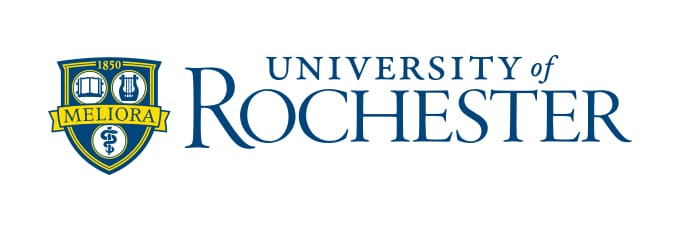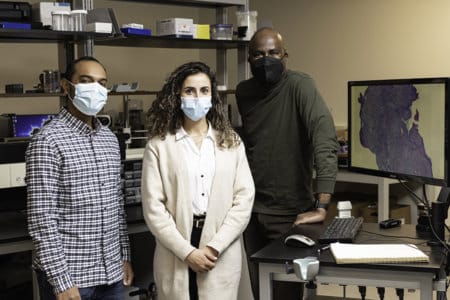While undergoing a master’s thesis at the University of Rochester’s Institute of Optics, Jiakai Lyu’s path intersected with that of Professor Geunyoung Yoon, who visited campus to speak on the challenges of virtual reality optics. This interaction sparked a collaboration that would shape Lyu’s entire academic and professional trajectory.
“I decided to work with him for my thesis, and the results were exciting,” he shares. “To complete my work, I decided to apply for a PhD position at the institute to stay with Professor Yoon. It was difficult competing against the best students in the world, but I’m happy I made it.”
Upon beginning the programme, Lyu gained access to various courses covering diverse topics — so he chose 15 for himself. Though his research focused on vision science, the multidisciplinary approach fostered by the Institute proved invaluable, laying the groundwork for innovative breakthroughs that were presented at conferences like the Wavefront Congress and Association for Research in Vision and Ophthalmology annual meeting. Eventually, Lyu’s findings captured the attention of industry stalwarts like Alcon, where he now spearheads research and development initiatives as their Principal Optical Engineer.
“The training I received in the Institute well serves my current role, and I am confident about the research and development that I am conducting now,” shares the graduate. “When I talk to my colleagues and friends about the Institute of Optics, most of them indicate that they know that we have a strong PhD programme. I take pride in the Institute, and I am grateful for the benefits associated with my diploma!”

“I believe the Institute’s reputation in the industry has been built up by all the excellent students and graduates, and it will continue to be maintained by us!” says Jiakai Lyu. Source: University of Rochester
It’s easy to understand why Lyu’s colleagues were in awe of his academic background. The Institute is known for producing powerhouses — much like Donna Strickland, who was awarded the Nobel Prize in Physics in 2018 for her work as a PhD student.
Such outcomes are typical of students who pursue pioneering programmes. The Institute’s PhD programme is the first of its kind in the US, designed to prepare graduates to carry out independent, creative research in an industrial, academic, or government setting. Central to the programme’s success is its multifaceted curriculum, comprising a blend of research, coursework, teaching assistantships, and thesis work. The combination challenges students to push the boundaries of what is possible in the field of optics — a goal further made possible by the programme’s association with the esteemed Laboratory for Laser Energetics.
Indeed, collaboration is woven into every aspect of the programme. Students on this route are empowered to explore the vast landscape of optics through interdisciplinary research. Unlike traditional programmes where students are placed in research groups upon admission, students can immerse themselves in various research groups, experiencing the diverse array of disciplines within optics. Through coursework, special seminars, and individual meetings with faculty members, they engage in a journey of exploration to discover their passions. And with research groups spanning biomedical optics, optical communication, image science, and more, they are truly spoiled for choice. Each group brings a unique perspective and expertise to the table, creating a dynamic ecosystem of collaboration and innovation.
“The collaborative culture at the Institute instilled in me the value of having a professional and academic community of peers where I will always feel at home,” shares recent graduate Nicholas Kochan.

The Institute of Optics is home to the US’s first education programme in optics. Source: University of Rochester
Once students identify the area they’re most passionate about, they can explore it wholeheartedly before eventually showcasing their findings to partner companies, faculty, and industry experts through the Industrial Associates programme. The opportunity often leads to exciting employment opportunities.
But perhaps the most remarkable aspect of the Institute’s approach is its recognition of optics as a bridge between multiple disciplines. Gone are the days when students must be experts in physics, engineering, or biology to excel in optics. Instead, the Institute welcomes qualified candidates from diverse backgrounds, including physics, mechanical engineering, electrical engineering, biomedical engineering, material science, chemistry, and even data science.
The best part? The Institute further proves its commitment to diverse perspectives by championing accessibility. While admission to its graduate programmes is selective, it recognises the importance of ensuring financial considerations are not barriers to education. That’s why it offers a range of internal fellowships to both PhD and MS students.
For PhD students, financial support typically includes a stipend and a full tuition waiver. During the initial two semesters of study, students receive stipend support through a department fellowship. Subsequently, students engage in research activities, contributing to the advancement of knowledge in optics while earning their stipends.
Recognising the diverse needs of its student body, the University of Rochester has even implemented initiatives to support student-parents. Through a childcare grant programme, full-time PhD students who are parents of young children receive financial assistance to help cover childcare expenses. It has also expanded access to single-payer health insurance coverage for all full-time PhD students.
Follow the University of Rochester on Facebook, Instagram, LinkedIn, and X.













